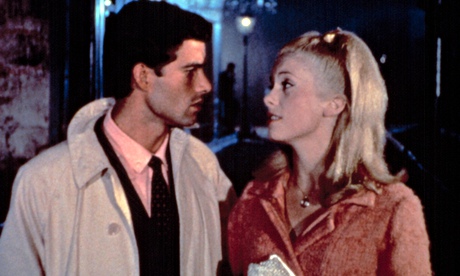
One of the enduring attractions of the French New Wave is what is now thought of as Jacques Demy's seaside trilogy – three bittersweet musical films on the themes of love, loss and life not turning out the way you expect it to, all with recurring characters and taking place in ports on the Atlantic coast. All three are designed by Demy's school friend Bernard Evein with music by Michel Legrand.
The first, Lola (1961), Demy's directorial debut, is a cleverly patterned fairytale set in his native Nantes and stars Anouk Aimée as a golden-hearted nightclub prostitute reunited with her former love and is stunningly shot in black and white by key nouvelle vague cameraman Raoul Coutard.
The other two, The Umbrellas of Cherbourg and Les Demoiselles de Rochefort (1967), are both in imaginatively used colour and pay homage to the Hollywood musical, most especially the films of Vincente Minnelli and Stanley Donen, nostalgic remembrances of things pastel.
Fifty years old this spring (it won the Palme d'Or at the 1964 Cannes festival) and wearing well, The Umbrellas of Cherbourg is inspired as much by René Clair's innovative French classic of 1930, Sous les toits de Paris, and the prewar Pagnol Marseilles trilogy (Marius/Fanny/César) as by Hollywood. Set between 1957 and 1963, it stars the young Catherine Deneuve, also the star of Les Demoiselles de Rochefort. She's enchanting as an umbrella shopkeeper's teenage daughter left pregnant by her mechanic boyfriend (who's gone to do his military service in the Algerian war) and forced by her mother to marry a rich jeweller. It's a sung-through musical with no conventionally spoken dialogue, the score dominated by Legrand's If it Takes Forever. Like Antonioni's Red Desert, made in the same year, it paints a rather drab town in colours that reflect the characters' moods.
These restored anniversary DVD and Blu-ray discs are accompanied by a perceptive introduction and a sound-only interview with Catherine Deneuve by Geoff Andrew, a brief word from French movie star Virginie Ledoyen, an essay on the restoration and a 90-minute documentary on Demy.

